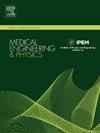Impact testing methods to simulate head impacts due to falls from standing height
IF 1.7
4区 医学
Q3 ENGINEERING, BIOMEDICAL
引用次数: 0
Abstract
Fall is one of the leading causes of traumatic brain injury (TBI), and thus, there is an increasing interest in validated tools and protective devices to prevent fall-related TBI. Developing head protective technologies for fall requires a reliable testing method to realistically mimic kinematics of head impacts due to fall to evaluate the injury attenuation of such protective headgears. The objective of this study is to recommend an appropriate and repeatable testing method for simulating fall-related head impacts due to standing height falls. To that end, several impact testing methods that commonly use to assess the efficacy of protective headgear were evaluated and compared. The four different test methods include: (1) a whole-body anthropomorphic test device (ATD) drop; (2) a drop-tower equipped with a Hybrid III head and neck assembly; (3) ASTM F429/F1446 standard; and (4) a linear impactor equipped with a Hybrid III head and neck assembly. Although the ATD drop system simulates fall-related head impacts realistically by considering the whole-body kinematics during falls from standing height, this method showed low repeatability. Among the three repeatable testing methods, only the drop tower with Hybrid III head and neck assembly showed statistically similar results to the ATD drop system for front and rear head impacts for all parameters examined in this study including peak linear acceleration, Head Injury Criterion, peak angular acceleration and peak angular velocity. The results suggested that drop-tower with Hybrid III head and neck assembly can realistically captured both translational and rotational motions of the head during impact due to standing height falls in a repeatable manner.
模拟从站立高度跌落时头部撞击的冲击试验方法
跌倒是创伤性脑损伤(TBI)的主要原因之一,因此,人们对有效的工具和保护装置越来越感兴趣,以防止跌倒相关的TBI。开发针对坠落的头部防护技术,需要一种可靠的测试方法来真实地模拟由于坠落引起的头部撞击运动学,以评估这种防护头盔的损伤衰减。本研究的目的是推荐一种适当的、可重复的测试方法来模拟由于站立高度跌落而导致的与坠落相关的头部撞击。为此,对几种通常用于评估防护帽有效性的冲击试验方法进行了评估和比较。四种不同的试验方法包括:(1)全身拟人试验装置(ATD)跌落;(2)配备混合动力III头颈组件的落塔;(3) ASTM F429/F1446标准;(4)配备有Hybrid III头颈组件的线性冲击器。尽管ATD跌落系统通过考虑从站立高度跌落时的全身运动学,真实地模拟了与跌落相关的头部撞击,但该方法的可重复性较低。在三种可重复的测试方法中,只有混合动力III头颈组件的跌落塔与ATD跌落系统在前后头碰撞的所有参数(包括峰值线加速度、头部损伤标准、峰值角加速度和峰值角速度)上的结果具有统计学上的相似性。结果表明,带有Hybrid III头颈组件的跌落塔可以真实地捕捉由于站立高度下降而导致的头部在撞击过程中的平移和旋转运动,并且可以重复进行。
本文章由计算机程序翻译,如有差异,请以英文原文为准。
求助全文
约1分钟内获得全文
求助全文
来源期刊

Medical Engineering & Physics
工程技术-工程:生物医学
CiteScore
4.30
自引率
4.50%
发文量
172
审稿时长
3.0 months
期刊介绍:
Medical Engineering & Physics provides a forum for the publication of the latest developments in biomedical engineering, and reflects the essential multidisciplinary nature of the subject. The journal publishes in-depth critical reviews, scientific papers and technical notes. Our focus encompasses the application of the basic principles of physics and engineering to the development of medical devices and technology, with the ultimate aim of producing improvements in the quality of health care.Topics covered include biomechanics, biomaterials, mechanobiology, rehabilitation engineering, biomedical signal processing and medical device development. Medical Engineering & Physics aims to keep both engineers and clinicians abreast of the latest applications of technology to health care.
 求助内容:
求助内容: 应助结果提醒方式:
应助结果提醒方式:


